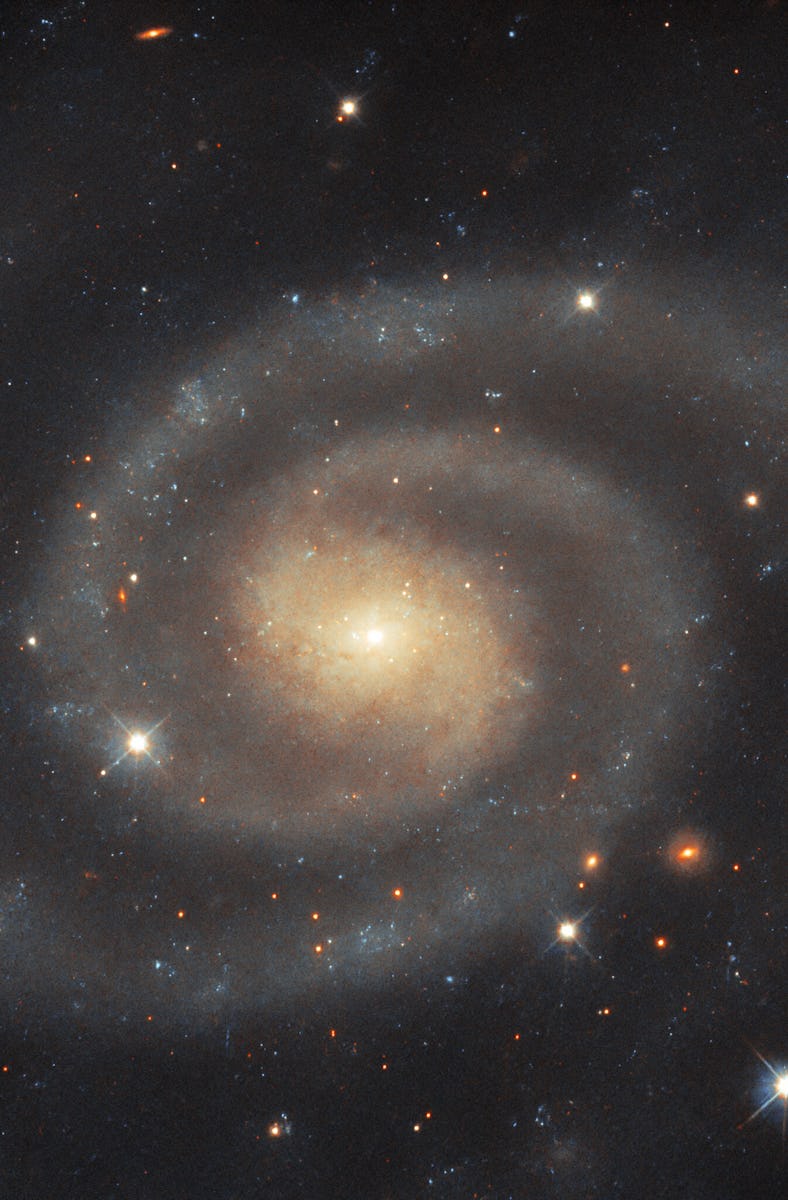Hubble Captured A Near-Perfect Spiral Galaxy Just After A Supernova
The calm after the storm.

Don’t be fooled by this peaceful image of spiral galaxy UGC 11105. Just a few years ago, it was the site of a tremendous cataclysm.
In 2019, astronomers saw a sudden light bloom in the spiral galaxy, blazing bright enough to drown out all the other light from the galaxy in its sudden glow. A star in one of the galaxy’s long spiral arms had exploded in a supernova, briefly outshining the combined glow of not only billions of other stars but also the actively-feeding supermassive black hole at the galaxy’s center. The light of the supernova faded over the next few months, and UGC 11105 glows gently in this recent image from the Hubble Space Telescope.
UGC 11105 is about 110 million light years away from Earth, in the constellation Hercules.
The supernova that briefly lit up UGC 11105 actually happened at least 110 million years ago; it took the light of the dying star that long to cross the vastness of space between the distant galaxy and Earth. But from our perspective on Earth, the supernova may as well have just happened in 2019.
Distance in space can play tricks on the mind that way. The 110 million light years between Earth and UGC 11105 also make the galaxy look faint and dim. From our perspective, the Sun appears 14,000 trillion times brighter than all the billions of stars in UGC 11105 put together. Even the stars in the foreground of this image look brighter than the more distant galaxy.